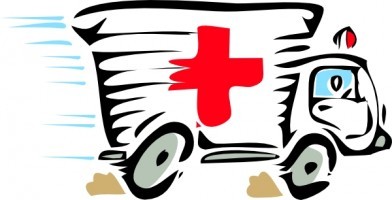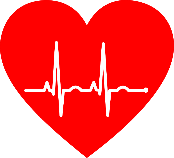|
View this as a webpage
May 2019

Thank you to Tom Vanderwal, program director of Minnesota’s Greater NW EMS (GNWEMS) and the EMS representative on Minnesota’s Rural Health Advisory Committee. The Office of Rural Health and Primary Care's Flex Program asked if GNWEMS would participate in a pilot project that would focus on EMS feedback. The project was part of a Minnesota Medicare Rural Hospital Flexibility Grant that included Stratis Health. GNWEMS developed relationships with key stakeholders, coordinated meetings, examined EMS transfer patterns and developed a loop closure for EMS feedback to the ground provider. This Spotlight includes Tom’s overview of this project.
|
Introduction

A comprehensive emergency medical services (EMS) system is a highly coordinated system of “response and emergency medical care, involving multiple people and agencies.” [i] EMS services are vital to all communities, but especially to rural communities where clinics and hospitals are few and far between. In a medical emergency, we call 911 and trust that an ambulance with skilled EMS personnel will arrive quickly and tend to the patient while transferring them to an emergency department. But all rural and frontier areas are unique, and EMS has to consider vastly different geographies, weather, hospital access, necessary equipment and sufficient workforce.[ii] In addition, local communities design their own EMS systems and that can result in significant differences from community to community.[iii]
For time critical diagnoses (TCD) such as stroke, STEMI[iv] or trauma, every second spent reaching a patient, assessing and transferring them makes a difference. Recommended standards of emergency care can help EMS organizations meet optimal time frames for successful treatment.
|

For time critical emergency calls, there are recommended time frames for optimal care and patient outcomes. In trauma[v] cases, the window is 60 minutes from the moment of injury to definitive care. For STEMI cases, a recommended treatment window for patients is 90 minutes. Currently, many emergency medical service providers in rural Minnesota are working to optimize patient outcomes for time-critical events such as trauma and stroke, by using quality measures, protocols, policies and improved technology-readiness. ORHPC's Minnesota Medicare Rural Hospital Flexibility Program (Flex) has been supporting a variety of EMS initiatives across rural Minnesota. This issue will focus on two Flex-supported initiatives to increase understanding and improve time critical care for those involved in emergency medical services.
|
EMS time critical survey

In 2015, the Flex program funded a statewide survey to better understand rural EMS sustainability. The EMS survey asked how rural EMS agencies were trained and equipped to assess, manage and transport patients who were experiencing time critical events. These results were summarized in the short brief, Responses to time critical questions in rural EMS regions.
The survey results demonstrated that many rural EMS agencies had received recommended education and had protocols and policies in place to treat and transport patients with a time critical diagnosis.
The survey also revealed that most EMS agencies do not receive feedback from the receiving hospital following transport of a patient with a time critical condition such as trauma or stroke, but do receive some feedback on STEMI and cardiac arrest events.
Emergency medical services following the onset of a time critical condition are important for patient outcomes. EMS staff diagnose, treat and transfer patients to the appropriate care facility. In order to do this well, EMS providers need ongoing training, access to equipment and technology as well as an understanding of triage and assessment protocols. EMS must also be knowledgeable about available hospital services and which facilities are most appropriate for their patient based on their diagnosis. Following protocols and recommended guidelines are key steps in providing patient care for time critical conditions.
|
 Quality and process improvement
Since time-critical cases are fairly rare, it is important that local EMS agencies continuously hone their skills and evaluate the care given after each case has occurred. One way to accomplish this is to receive feedback from the tertiary[vi] hospital on the care that was provided to the patient before s/he/they arrived. As the results of the EMS survey were being analyzed, Minnesota's Flex program developed an idea for a time critical care process improvement project that Stratis Health and the Greater Northwest EMS agreed to support. The goal of the time critical care collaboration (TCCC) project was to build a complete communication loop between tertiary organizations and the EMS system. The objective was to develop:
…emergency medical services (EMS) feedback ….to establish a communication loop from pre-hospital patient interaction, to the local Critical Access Hospital (CAH)[vii] emergency department, to the tertiary care center, back to the local emergency department, and finally back to the initial EMS agency.[viii]
While the project initially focused only on trauma and stroke patients and their emergency needs, program participants soon added ST-elevation myocardial infarction (STEMI) patients since these conditions also require rapid assessment, treatment and transport to specialty-equipped facilities. Delays in any phase of care can lead to poor outcomes or death.
Later in 2017, the project was expanded to include hospitals and EMS agencies within the Southwest EMS region, which doubled the number of participants in the project.
Information about patient outcomes after a transfer to a tertiary facility is already often reported back to a local CAH. But that same information is rarely passed along to the EMS agency responsible for the care during transport. By using an EMS feedback form, the goal is to provide this information back to local EMS agencies to help them evaluate their protocols, and to improve training, peer review and provider capability.
Time critical care collaboratives
Each of the Minnesota time critical care collaboratives include local EMS staff members, medical directors and service directors from numerous ambulance services in the region. Each collaborative also includes a member from their local CAH and their common tertiary care facilities. The success they have had in sharing information between members within each collaborative has greatly improved communication and relationships along the entire chain of emergency health care. One collaboration has created a regular Regional Peer Review led by surgical and nursing staff from the tertiary hospital. Since EMS are now included in the information loop, this has been beneficial for local EMS organizations.
Minnesota's Regional Trauma Advisory Committees[ix] have also been participating in this project by engaging with local CAH emergency departments to help close the loop of information on patient outcomes and provide improved regional patient care.
On-going monthly conference calls include a representative from each collaborative, staff from Minnesota’s Greater NW EMS and Southwest EMS Regional programs, Minnesota Department of Health and Stratis Health. The relationships that have been created have given rise to a comfortable level of inquiry, discovery and increased educational opportunities. All members of the time critical collaboratives have reported that staff appreciate being recognized for their role in initiating life saving measures that provide improved patient outcomes.
Lessons learned and next steps
There are several common themes that have emerged from these time critical care collaboratives:
- Implementing patient protocols and following recommended guidelines for time critical events are key to providing timely, appropriate care.
- Feedback and case reviews are important for consistently implementing treatment and transport guidelines, especially for time critical cases.
- Feedback and case reviews are an important component in ensuring quality improvement for EMS agencies.
Next steps include sharing their findings among EMS providers and partners and promoting the building of these crucial relationships to improve health care outcomes for all patients with time critical diagnoses.
[iii] National Highway Traffic Safety Administration. https://www.ems.gov/faqs.html Accessed April 26, 2019.
[iv] ST-Elevation Myocardial Infarction (STEMI) is the most severe type of heart attack. A heart attack or myocardial infarction happens when an artery supplying blood to the heart suddenly becomes partially or completely blocked by a blood clot. This blockage causes some of the heart muscle to die from lack of nutrients and oxygen. Minnesota Department of Health, Cardiovascular Health. https://www.health.state.mn.us/diseases/cardiovascular/stemi/index.html Accessed May 15, 2019
[v] Trauma refers to an injury that potentially threatens life or limb, or otherwise requires the systemized coordination of care and application of best practices in order to optimize a patient's outcome. The leading cause of death for people between the ages of one and 44, and the third leading cause of death overall. More years of potential life before age 65 are lost due to unintentional injury than due to any other cause. (MDH Time critical incident responses: Results from the 2016 Rural EMS sustainability survey)
[vi] Primary, secondary, and tertiary care are levels of care related to the complexity of a medical issue. Tertiary care requires specialized equipment and medical personnel. A tertiary hospital can provide specialty health care and has the necessary equipment to deal with a complex medical emergency.
[vii] A Critical Access Hospital (CAH) is a designation given to eligible rural hospitals by the Centers for Medicare and Medicaid Services (CMS). Minnesota Department of Health. https://www.health.state.mn.us/facilities/ruralhealth/flex/cah/index.html Accessed May 15, 2019.
[viii] Top Flex Activities for the Minnesota Department of Health, Office of Rural Health and Primary Care. National Rural Health Research Center. https://www.ruralcenter.org/tasc/flexprofile/minnesota Accessed May 3, 2019.
[ix] The statutory function of the Regional Trauma Advisory Committees is to advise, consult with, and make recommendations to the State Trauma Advisory Council (STAC) for regional modifications to the Minnesota statewide trauma criteria that will improve patient care and accommodate specific regional needs. https://www.health.state.mn.us/facilities/traumasystem/rtac/index.html Accessed May 2, 2019.
|